Performance At All Costs: 11 Speedy All-Flash Arrays
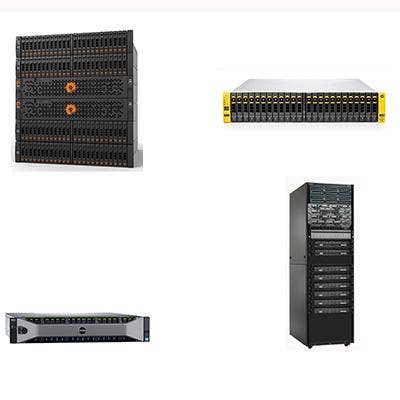
11 Vendors Race For Performance
When it comes to pure performance from a storage solution, the choice today is all-flash storage arrays. These storage devices feature NAND flash and SSD technology, but no spinning disk, to give them the best performance possible for workloads where capacity is not a major requirement, including virtual desktop infrastructure or on-line transaction processing.
CRN, as part of its Storage Week feature with a focus on all-flash vs. hybrid flash storage arrays, gathered the latest all-flash arrays from 11 vendors ranging from tiny startups to behemoths of the industry.
Buckle your seatbelt and prepare for speed.
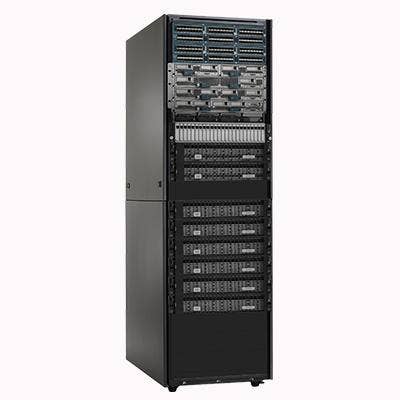
Cisco UCS Invicta
The Cisco UCS Invicta family of all-flash storage offers a maximum flash capacity for performance of 144 TB, or 384 TB with the deduplication option. Cisco also offers a performance option. Cisco UCS Invicta products work with Cisco UCS servers as part of an end-to-end IT solution enabling consumers to simply deploy and manage a full suite of application-performance-centric data center resources with pools of scalable resources that can be configured to meet business needs. A sample use case is a 2,000-seat non-persistent virtual desktop infrastructure solution that Cisco said could be done with a 6-TB Invicta appliance with deduplication.
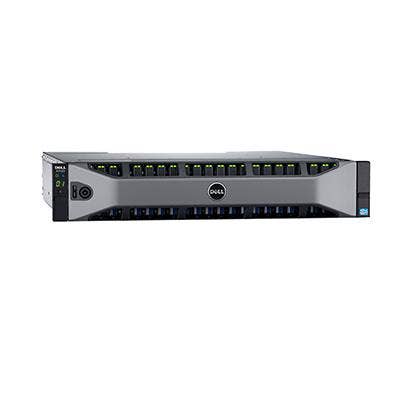
Dell Storage SC4020
Dell offers all-flash versions of its SC Series (Compellent) and PS Series (EqualLogic) storage arrays. In 2013, Dell redesigned its Storage Center operating system to be fully optimized for flash to support auto-tiering between read- and write-intensive drives to reduce the cost of all-flash storage. Dell's midtier SC4020 is an entry-level model that brings the cost of all-flash storage to only $25,000. It includes six 480-GB read-intensive SSDs for a total of 2.8 TB of raw capacity. Dell also introduced a flash-optimized multitier configuration that provides six 480-GB read-intensive SSDs and six 200-GB write-intensive SSDs for more than 4 TB of raw capacity with a $35,000 advertised street price.
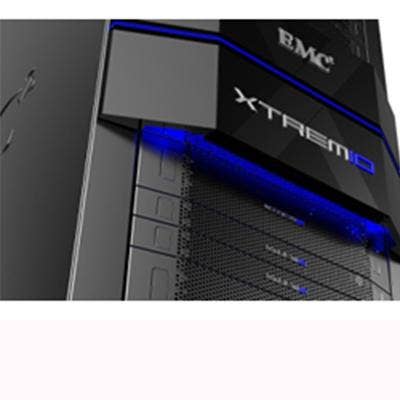
EMC XtremIO
EMC in 2013 introduced its first all-flash array based on its 2012 acquisition of startup XtremIO, and followed up with a new entry-level configuration, the Starter X-Brick, that the company said offers the same performance and data services of its standard XtremIO nodes but can be purchased with as little as 5 TB of flash storage capacity vs. 10 TB or 20 TB for standard X-Bricks. Up to six XtremIO X-Bricks can now be clustered together vs. the previous four.
EMC also added space-efficient snapshot capabilities for both the data and the metadata stored on XtremIO X-Bricks, as well as data at rest encryption and inline compression.
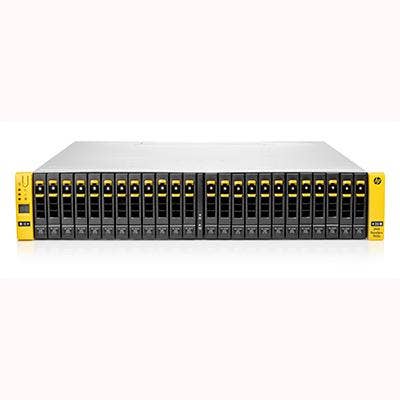
Hewlett-Packard 3Par 7450c
The HP 3Par StoreServ 7450c Storage all-flash array offers a purpose-built, flash-optimized architecture that supports 460 TB of raw capacity and 1.3 PB of usable capacity. The HP 3Par StoreServ 7450c provides Tier-1 data services, quad-node resiliency, and seamless data mobility between systems, and boosts application performance with more than 900,000 IOPS at between 0.3 and 0.7ms latency.
By configuring the system with high-density 1.92-TB commercial MLC (cMLC) NAND and HP 3PAR thin deduplication, the solution can cost about $2 per usable GB, HP said. Also included is a standard five-year warranty on all HP 3Par StoreServ SSDs and HP's "Get 6-Nines" guarantee program to provide 99.9999 percent uptime.
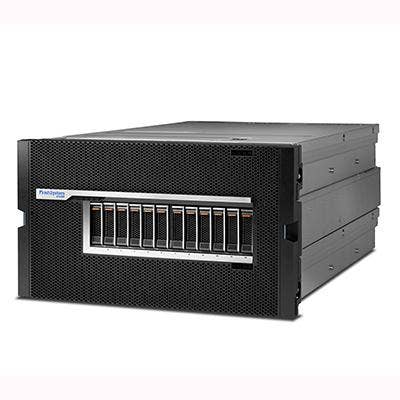
IBM FlashSystem 900/V9000
IBM is launching two new FlashSystem all-flash arrays, the FlashSystem 900 designed as premier Tier 0 high-performance storage, and the FlashSystem V9000 Tier 1 enterprise storage platform. They are built around IBM FlashCore technology that integrates Micron MLC flash components to improve data protection and reliability. Real-time compression technology can provide up to 5:1 compression.
The all-flash arrays can be configured for Tier 0 or all-flash Tier 1 solutions as part of an IBM hybrid storage architecture, as part of a virtualized infrastructure with heterogeneous storage, or as cross-geography block, file, and object workloads that integrate tape.
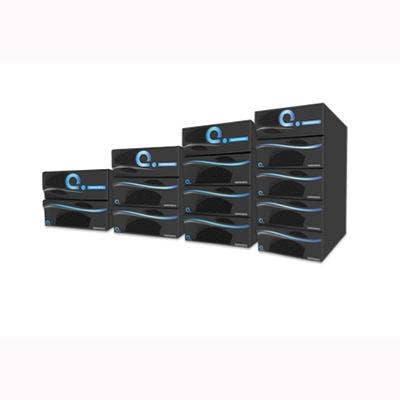
Kaminario K2
The Kaminario K2 all-flash array offers guaranteed effective capacity that ranges from 22 TB to 360 TB with the option to scale further. The K2 configures for less than $2 per GB usable, and allows independent scale-up and scale-out capabilities. Its selectable global in-line deduplication can be turned off when not needed, but encryption is always on to prevent data theft and comply with industry and government regulations. The company's HeathShield software includes cloud-based call-home analytics and events-based alerts.
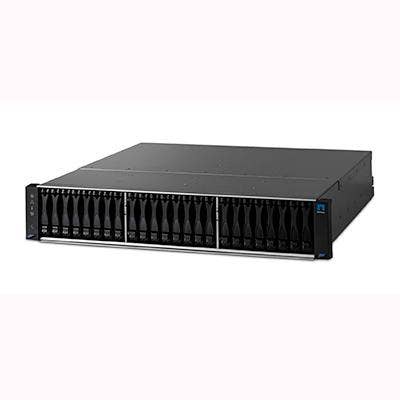
NetApp EF560
The NetApp EF560 all-flash array provides high IOPS for transactional workloads (OLTP) and high bandwidth for analytics (OLAP). Its SANtricity OS delivers fast I/O for business-critical applications. The 2U EF560 supports up to 192 TB of raw capacity with sub-millisecond response times, and up to 12 GBps of bandwidth.
For data reliability, the EF560 offers redundant components with automated failover, comprehensive data management and tuning features, proactive repair, snap and remote replication for fast backups and long-distance recovery, and integration with Oracle Enterprise Manager, VMware vSphere, Microsoft Systems Center and Splunk.
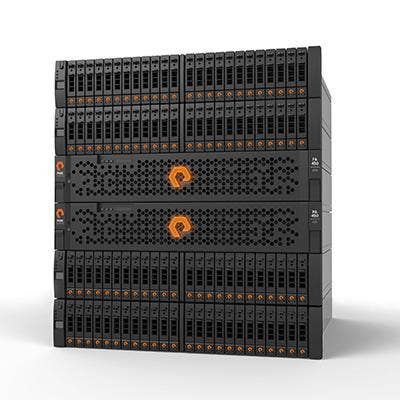
Pure Storage FlashArray 405/450
Pure Storage's FlashArray 405 and FlashArray 450 provide entry-level and high-capacity solutions to meet a variety of enterprise budget, capacity and performance requirements. Both include inline data reduction, enterprise resiliency and global data protection.
The FlashArray 405 is built for midsize enterprises, distributed operations, and single application deployments and offers up to 40 TB or more of effective capacity depending on workload, or up to 11 TB of raw capacity. The FlashArray 450, built for large enterprises, offers up to 250 TB or more of effective capacity or from 34 TB to 70 TB of raw capacity.
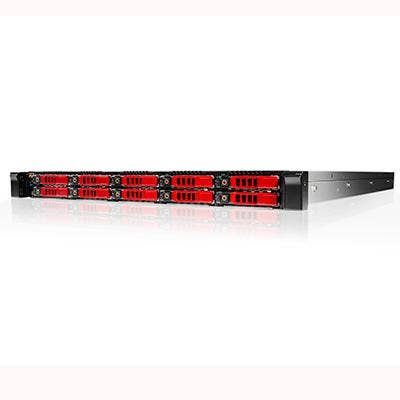
SolidFire SF9605
SolidFire in February introduced the SF9605, a new all-flash array node that comes configured with 9.6 TB of raw capacity utilizing SanDisk cMLC-based SSDs. With compression and deduplication, the SF9605 can store up to about 34.5 TB.
The SF9605 features a 25 percent lower cost per GB than SolidFire's flagship SF9101 all-flash array, with slightly lower performance, the company said.
SolidFire is also developing Element X, a software-only version of its technology for use by hyper-scale data centers or large-scale services providers that can build their own all-flash arrays.
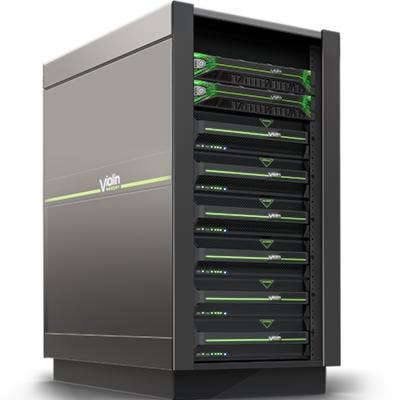
Violin Memory 7700 FSP
Violin Memory early this year started shipping the Violin 7700 Flash Storage Platform (FSP) high-end modular solution. The 7700 FSP, which Violin called the only all-flash platform in the industry that natively delivers a zero data loss architecture, is targeted at large, multipetabyte and multisite deployments.
Powered by Violin's Concerto OS 7 software, the 7700 FSP provides from 11 TB to 420 TB of raw capacity, or more than 1.3 PB of effective capacity after optional deduplication and compression, and serves up to 20,000 persistent virtual desktops across six shelves. Data protection services include synchronous replication and stretch cluster capabilities.
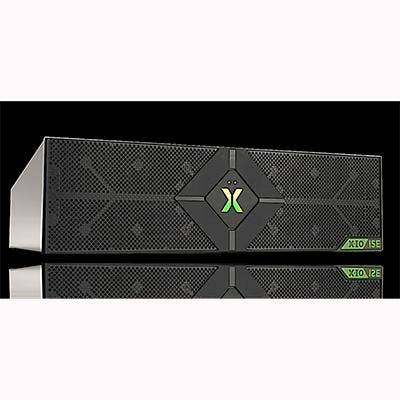
X-IO ISE 800 Series
X-IO Technologies in March unveiled the Intelligent Storage Element (ISE) 800 series all-flash array, and claimed the No. 1 position for price-performance in the Storage Performance Council’s SPC-1 benchmark at 32 cents per SPC-1 IOPS. The three models in the ISE 800 series, including a model with up to 6.4 TB of enterprise-class MLC flash technology, one with 25.6 TB, and one with 51.2 TB, are backed by a standard five-year warranty, a 100 percent performance availability promise even at 100 percent capacity utilization, and hypervisor-integrated management.